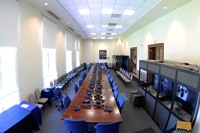|
The recovery of assets stolen in cases of corruption has become a central aspect of the fight against corruption. Article XV of the Inter-American Convention against Corruption, signed in 1996, establishes the need for the broadest possible assistance between the States Parties for the identification, tracing, freezing, seizure and forfeiture of property or proceeds obtained, derived from, or used in the commission of acts of corruption. Taking into account what is established by the Inter-American Convention, as well as developments subsequent to its signature, such as the United Nations Convention against Corruption, which has a specific chapter on this subject, the Heads of State and Government of the Americas, at a meeting in Monterrey, Mexico, on the occasion of the Extraordinary Summit of the Americas, committed to deny safe haven to corrupt officials, as well as those who corrupt them, and their assets; and to cooperate in their extradition as well as the recovery and return of proceeds of corruption to their legitimate owners, and to enhance the regional mechanisms for mutual assistance in criminal matters and their implementation. This commitment has been reiterated in various hemispheric documents and instruments, such as:
Specifically, in development of the Plan of Action of Managua, and in fulfillment of Resolutions AG/RES. 2034 [XXXIV-O/04, resolves paragraph 6, c) and CP/RES.875 (1460/05), a Meeting of Experts on cooperation with respect to the denial of safe haven to corrupt officials and those who corrupt them, their extradition, and the denial of entry and recovery of the proceeds of corruption and their return to their legitimate owners, was held at OAS Headquarters in March, 2005 (REXCOR). At that time, the experts agreed, among other recommendations, for the OAS General Secretariat to take steps for the joint implementation of training and technical assistance programs for competent officials in OAS Member States. In that sense, the Government of the United States, with the support of the General Secretariat of the OAS, held a seminar on the forfeiture of proceeds of corruption, in Miami, in May, 2006, which targeted officials in OAS Member States with direct and concrete responsibilities in all matters related to the recovery of assets and property that are the result of acts of corruption and their return to their legitimate owners. Subsequently, the OAS General Assembly, through Resolution AG/RES. 2275 (XXXVII-O/07), approved the new text of the Inter-American Program of Cooperation to Fight Corruption, adopted by the Conference of States Parties to the “Follow-up Mechanism for the Implementation of the Inter-American Convention against Corruption” (MESICIC), at its Second Meeting, held at OAS Headquarters in November, 2006, and Chapter III of which specifically addresses the recovery of assets. More recently, in the Declaration of Commitment of Port of Spain, the Heads of State and Government of the Americas, on the occasion of the Fifth Summit of the Americas, held in April, 2009, reiterated their commitment to deny safe haven to corrupt officials, those who corrupt them and their assets, and to cooperate in their extradition as well as in the recovery and return of the proceeds of corruption to their legitimate owners, in the framework of applicable national and international law.
|
|
|||||||||||||||||||||||||||||||
|
|||||||||||||||||||||||||||||||||



